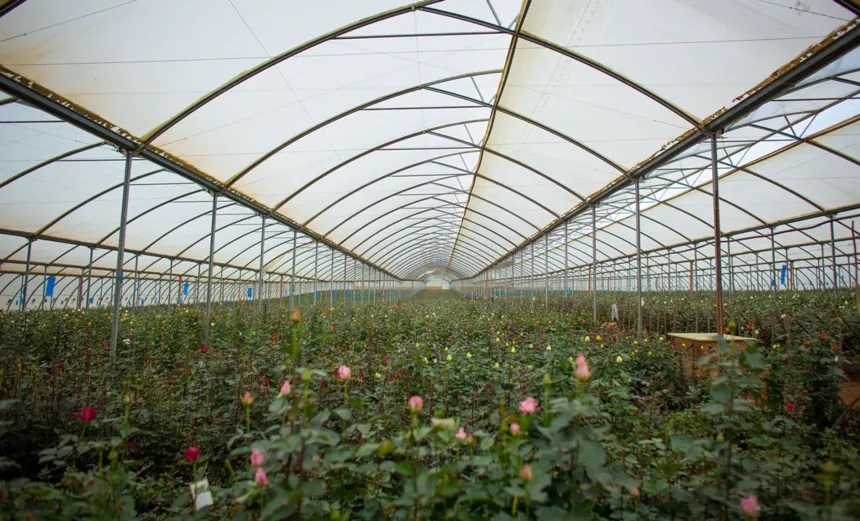
Ethylene, a small colourless, odourless gas composed of two carbon and four hydrogen atoms (C2H4), is responsible for both beneficial and undesirable effects in greenhouse crops. It can prevent flowering, shorten internode length, increase branching, initiate fruit ripening, trigger leaf and flower senescence and abscission, cause leaf chlorosis (yellowing), and improve adventitious rooting. Some crops are relatively insensitive to ethylene while others are very sensitive.
One of the easiest ways of detecting ethylene is by the use of indicator plants. These are plants so sensitive that they respond dramatically even at concentrations as low as 0.01 ppm.
Such responses usually show up within 24 hours of exposure, though lower greenhouse temperatures can slow the response. Use indicator plants which have not previously been exposed to ethylene and place them throughout the greenhouse, including any areas where you suspect ethylene is originating.
A second and more reliable method to detect ethylene is by sending an air sample to a commercial lab or a university lab. When taking samples to send for testing, choose from areas where you suspect ethylene may be coming. These could be inside, near a unit heater, or outside of the greenhouse, near a loading dock. Also sample areas where there is no ethylene problem, as a basis for comparison. Commercial kits for detecting ethylene are also available, but are not sensitive enough to detect low concentrations.
Finding the source
If you find that ethylene is present in your greenhouse, the next step is to find the source. Ethylene can come from several sources, such as ripening fruit, decomposing plant material, plant growth regulators that release ethylene, and as a by-product of incomplete combustion.
Preventing ethylene damage
If you discover that you do have an ethylene problem, the easiest and most immediate intervention is periodic ventilation of the greenhouse with clean outside air. Of course this is only a short term fix, and shouldn’t be considered a long term solution, particularly when heating costs are high.
The best approach to stop ethylene damage is the time honoured ounce of prevention. Careful and regular attention to the plant growing environment, shipping areas and post-harvest conditions can go a long way. In any of these areas ethylene can be present.
The key to preventing ethylene damage is being proactive. Ensure that heaters and equipment are well maintained, and reduce plant exposure to potential ethylene sources. Keep an eye on your plants for irregular growth and if potential ethylene damage is suspected be ready to take steps to identify the source of the problem and eliminate the cause.
